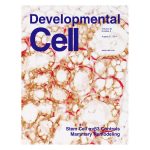
D-cyclins repress apoptosis in hematopoietic cells by controlling death receptor Fas and its ligand FasLMolecular regulators of HSC quiescence and unique metabolic dependencies of myeloid malignancies., Publication

Endogenous transmembrane protein UT2 inhibits pSTAT3 and suppresses hematological malignancyMolecular regulators of HSC quiescence and unique metabolic dependencies of myeloid malignancies., Publication

